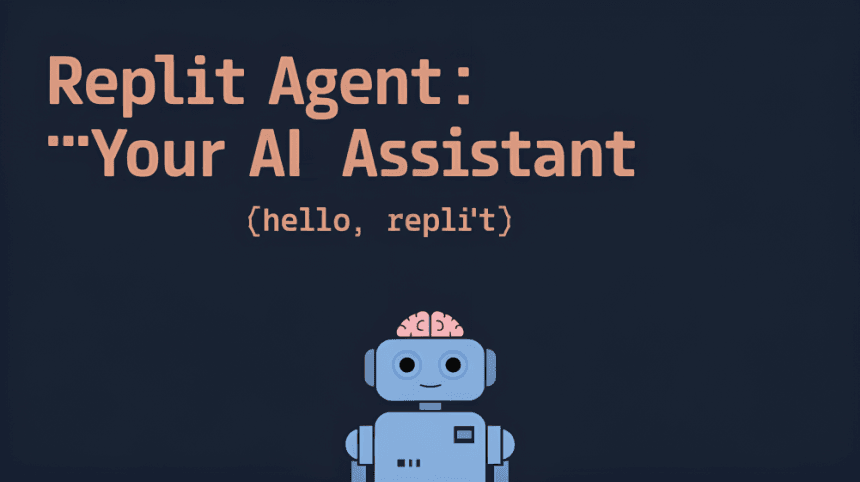Introduction
Replit Agent is an AI tool integrated within the Replit IDE that enables developers to code, set up environments, and deploy applications through natural language prompts. This article dives deep into the potential of Replit Agent, focusing on its ease of use, versatility, and real-world applications. We’ll explore how it compares to other AI tools like GitHub Copilot and Cursor AI, while also offering insights into project scaffolding, task automation, and deployment workflows.

What is Replit Agent?
Replit Agent is an AI-powered coding assistant designed to streamline the development process by writing code, setting up environments, and deploying apps in the cloud. Unlike many coding assistants, it goes beyond just code completion and helps manage the full lifecycle of an application. Developers can issue natural language prompts like “Create a guestbook app,” and Replit Agent handles everything from scaffolding the project to deployment.
Key Features
- Natural Language Interface: Allows users to issue commands in plain English.
- Full-Project Scaffolding: Automatically generates code and sets up environments.
- End-to-End Deployment: Automates deployment to cloud services.
- Multi-Step Task Execution: Capable of performing complex workflows, such as database setup and server configuration.
Who Can Benefit from Replit Agent?
Replit Agent is designed for developers of all levels, from beginners to seasoned coders. The natural language interface makes it especially useful for beginners who may struggle with setting up complex environments, while more experienced developers will appreciate the time-saving automation features for scaffolding and deployment.
How Replit Agent Works
Using Replit Agent is as simple as issuing a natural language command. For example, if you prompt it to “Build a task manager app with a database,” the agent will:
- Scaffold the project by setting up the file structure.
- Generate the front-end and back-end code using frameworks like React and Flask.
- Integrate a database like PostgreSQL.
- Deploy the app to the cloud, making it live.
Practical Use Cases for Replit Agent
Replit Agent excels in several real-world applications, automating tasks that would otherwise require manual intervention. Below are ten key use cases:
- Project Scaffolding: Automatically set up a project structure and install necessary dependencies.
- Full-Stack Application Development: Build a complete web app with front-end, back-end, and database integration.
- Debugging: Analyze code, identify bugs, and suggest fixes.
- Task Automation: Handle repetitive tasks like installing packages and setting up routes.
- Code Optimization: Refactor code to improve performance and readability.
- Adding Features: Integrate features like user authentication or payment gateways into existing projects.
- Learning and Documentation: Provide clear explanations of how technologies work and generate project documentation.
- Database Setup: Configure and connect databases to apps automatically.
- Cloud Deployment: Deploy apps seamlessly to cloud platforms without needing external tools.
- Multi-Language Support: Supports languages such as JavaScript, Python, and SQL for diverse project needs.
How to Set Up and Use Replit Agent
To start using Replit Agent, follow these steps:
- Sign up for Replit Core: Replit Agent is available for Core subscribers.

2. Access Replit Agent: Once signed in, access the Replit IDE, where you can open the Replit Agent interface.

3. Start Coding: Issue a command in natural language, such as “Build a to-do app,” and the agent will begin scaffolding and deploying your project.
Comparison: Replit Agent vs. GitHub Copilot and Cursor AI
While tools like GitHub Copilot and Cursor AI are excellent for in-line code suggestions, Replit Agent offers a more comprehensive solution by handling the entire project lifecycle. Below are some key differences:
- Project Management: Replit Agent scaffolds projects and manages deployment, while GitHub Copilot and Cursor AI focus mainly on code completion.
- Integration: Replit Agent is built into the Replit platform, eliminating the need to switch between different tools.
- Multi-Step Workflows: Replit Agent can execute complex, multi-step workflows, such as setting up a database and deploying to the cloud.
Best Practices for Using Replit Agent
- Be Specific: Provide detailed prompts like “Create a blog with a comments section” for better results.
- Break Down Tasks: For large projects, break tasks into smaller steps for accuracy.
- Review AI Output: Always review and test the generated code to ensure quality.
Addressing User Concerns
Free vs. Paid Plans
Replit Agent is available only to Replit Core subscribers, which may be a drawback for some users. However, the features offered justify the cost for those looking to automate complex workflows.
Data Privacy
Replit ensures that your code is stored securely within its platform and follows industry-standard encryption methods. Users concerned with privacy should review Replit’s privacy policies.
FAQs
- What programming languages does Replit Agent support?
Replit Agent supports a wide range of languages, including JavaScript, Python, SQL, and more. - Is Replit Agent free to use?
No, it is only available to Replit Core subscribers. - How does Replit Agent differ from other coding tools?
Unlike GitHub Copilot or Cursor AI, Replit Agent handles full-project scaffolding and deployment in addition to code completion.





